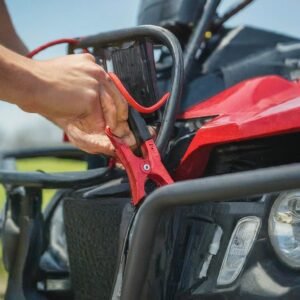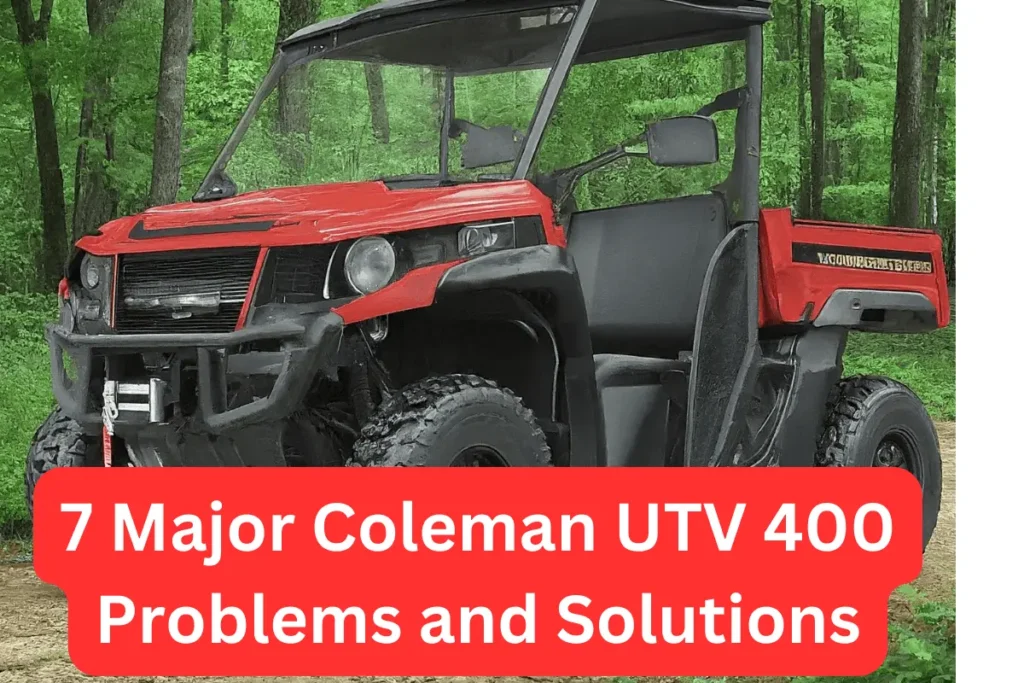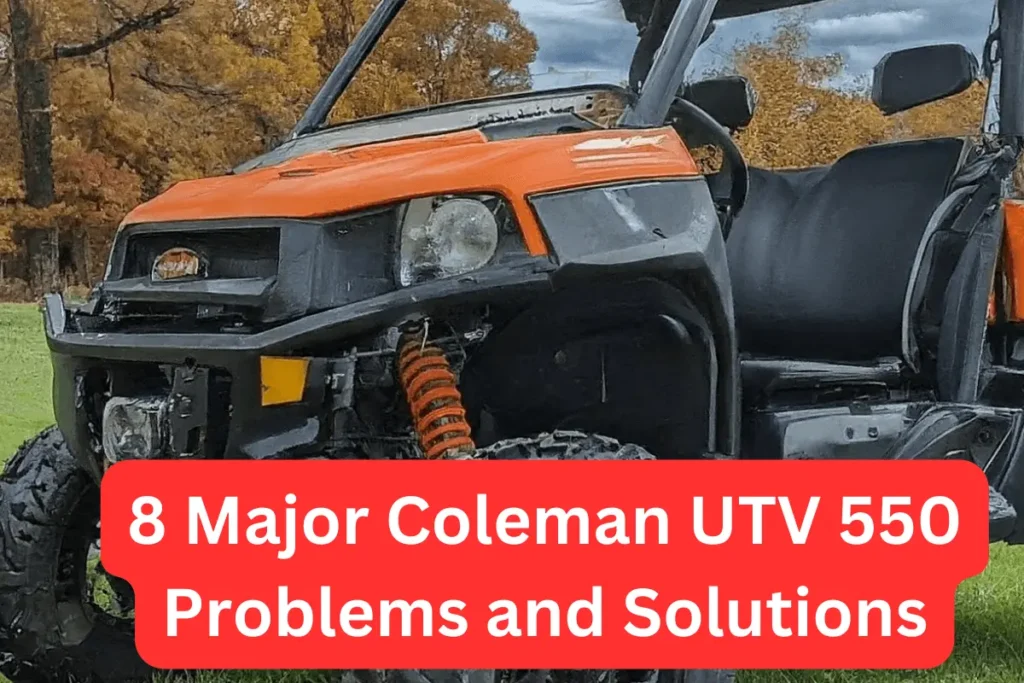Are you facing problems with your Polaris Ranger XP 900? You are not alone. Don’t worry. Here are complete details about these problems and their solutions.
The most common Polaris 900 XP ranger problems are starting issues, shifting problems, belt issues, turf mode issues, dust problems, front differential problems, power steering problems, fuel pump issues, dust ingress issues, lift kit problems, charging issues and EPS issues.
Polaris Ranger 900 XP problems and Solutions
Here are 12 common problems of Polaris Ranger with their easy solutions.
1. Shifting problems
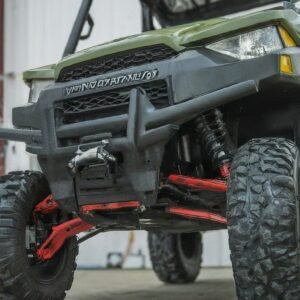
If you’re experiencing Ranger XP 900 shifting problems, it’s essential to understand some common issues and potential solutions. Here’s a detailed guide to help you troubleshoot:
- Check Fluid Levels: Low transmission fluid can cause shifting issues. Locate the transmission fluid dipstick, usually found near the engine, and ensure the fluid level is within the recommended range. If it’s low, top it up with the appropriate fluid as per the manufacturer’s instructions.
- Inspect Shift Linkage: The shift linkage connects the shifter to the transmission. Over time, it can become loose or damaged, leading to difficulty in shifting. Inspect the linkage for any signs of wear, rust, or damage. Tighten any loose bolts or replace damaged linkage components as needed.
- Examine CVT Belt: The Continuously Variable Transmission (CVT) belt plays a crucial role in shifting gears smoothly. If the belt is worn, damaged, or improperly adjusted, it can cause shifting problems. Inspect the belt for signs of wear, fraying, or glazing. You should replace the belt if necessary and adjust its tension according to the manufacturer’s instructions.
- Check Clutch System: A malfunctioning clutch can also result in shifting difficulties. Inspect the clutch components for wear or damage, including the clutch plates, springs, and basket. Replace any worn-out parts and ensure proper clutch engagement and disengagement.
- Review Electronic Controls: Modern Polaris Ranger XP 900 models come equipped with electronic controls that regulate shifting. Check for any error codes displayed on the instrument cluster. If there are error codes present, consult the owner’s manual or seek assistance from a qualified technician to diagnose and rectify the issue.
- Inspect Gear Selector: The gear selector mechanism should move smoothly between gears without any resistance. If you encounter resistance or difficulty in selecting gears, inspect the gear selector mechanism for obstructions, dirt, or damage. If necessary, clean and lubricate the selector mechanism, or replace any damaged components.
- Address Transmission Issues: If none of the above solutions resolve the shifting problems, there may be underlying issues with the transmission itself. Transmission problems could range from low fluid levels to internal damage or wear. Consult a professional mechanic or authorized Polaris service center for a comprehensive diagnosis and repair.
2. Polaris Ranger 900 XP Starting Problems

Firstly, let’s check the basics. Make sure that your Ranger has enough fuel. Sometimes, it’s easy to overlook the fuel gauge, and running out of fuel can cause starting issues.
Next, examine the battery. In most cases, starting problems occur due to a weak or dead battery. Ensure that the battery terminals are clean and tightly connected. If the battery is old or depleted, it might need to be replaced.
Check the spark plugs. Dirty or worn-out spark plugs can prevent your Ranger from starting smoothly. Inspect them for any signs of damage or buildup, and replace them if necessary.
The fuel system could also be causing issues. A clogged fuel filter or fuel lines can restrict the flow of fuel to the engine, leading to starting problems. Try cleaning or replacing the fuel filter and inspect the fuel lines for any obstructions.
If your Ranger is equipped with a fuel injection system, there might be issues with the fuel injectors or the fuel pump. Faulty injectors or a failing fuel pump can disrupt the fuel delivery to the engine, making it difficult to start. Have these components inspected by a mechanic if you suspect they’re the cause of the problem?
Lastly, consider the ignition system. A faulty ignition switch or a problem with the ignition coil can prevent the engine from starting properly. Test the ignition switch for continuity and inspect the ignition coil for any signs of damage.
If you’ve checked all these components and your Polaris Ranger 900 XP still isn’t starting, it’s best to consult with a qualified mechanic or contact Polaris customer support for further assistance.
They’ll have the expertise to diagnose the issue accurately and get your Ranger back up and running in no time.
3. Power steering problems

If you’re experiencing power steering problems with your Polaris Ranger 900 XP, there could be a few reasons behind it. Power steering issues can make driving your vehicle difficult and potentially dangerous, so it’s important to address them promptly.
Here are some common Polaris Ranger 900 XP steering problems and potential solutions:
- Low Power Steering Fluid: Check the power steering fluid level in your Ranger. Fill it up if it’s low. Low fluid can cause the power steering system to malfunction or make unusual noises.
- Leaks: Inspect the power steering system for any signs of leaks, such as fluid puddles under the vehicle or wet spots on hoses and connections. Leaks can result in a loss of power steering fluid and pressure, leading to poor steering performance.
- Faulty Power Steering Pump: The power steering pump is responsible for pressurizing the fluid and aiding in steering. If the pump is faulty or failing, you may experience stiff or jerky steering. In this case, the pump may need to be replaced.
- Worn Steering Components: Over time, the steering components, such as the tie rods, ball joints, and steering rack, can wear out or become damaged. This wear and tear can result in loose or erratic steering behavior. Make sure these components are in good condition and replace them if necessary.
- Electrical Issues: Some Polaris Ranger models come equipped with electronic power steering systems. If you’re experiencing problems with the power steering on such models, there could be issues with the electrical components, such as sensors or wiring. A professional diagnostic scan may be needed to identify and address these issues.
- Software Updates: In some cases, power steering problems may be resolved with a software update. Check with your Polaris dealer or authorized service center to see if any updates are available for your vehicle’s power steering system.
- Professional Inspection: If you’re unable to diagnose or fix the power steering problem yourself, it’s best to take your Ranger to a qualified mechanic or authorized Polaris service center for inspection and repair. They have the expertise and tools necessary to diagnose the issue accurately and safely.
4. Polaris Ranger 900 XP clutch problems
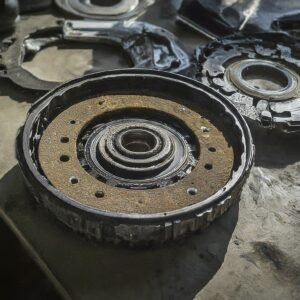
If you’re experiencing clutch problems with your Polaris Ranger 900 XP, you’re not alone. Clutch issues can be frustrating, but understanding what might be causing them can help you find a solution.
- Check for damage: Over time, the clutch components can wear down due to regular use. Inspect the clutch system for any signs of wear such as worn-out clutch plates, damaged springs, or worn bushings.
- Fluid Levels: Ensure that the clutch fluid levels are adequate. Low fluid levels can lead to improper clutch engagement and performance issues. If the fluid is low, top it up according to the manufacturer’s recommendations.
- Belt Inspection: The drive belt plays a crucial role in the clutch system. Check the belt for signs of wear, fraying, or damage. A worn-out belt can slip or fail to engage properly, causing clutch problems.
- Clutch Adjustment: Improper clutch adjustment can result in issues such as slippage or harsh engagement. Consult your owner’s manual for instructions on how to adjust the clutch properly. If you’re unsure, it’s best to seek assistance from a qualified technician.
- Cleaning and Maintenance: Dirt, debris, and grime can accumulate in the clutch system, affecting its performance. Regularly clean the clutch components and ensure proper lubrication to prevent premature wear and tear.
- Temperature Sensitivity: Extreme temperatures can also affect clutch performance. In cold conditions, the clutch may engage sluggishly, while in hot conditions, it may overheat and slip. Be mindful of operating your Ranger within recommended temperature ranges.
- Professional Inspection: If you’ve checked all the above and are still experiencing issues, it may be time to seek professional help. A certified mechanic or Polaris service center can diagnose the problem accurately and recommend appropriate solutions.
- Upgrades and Replacements: Depending on the extent of the clutch problems, you may need to consider upgrading certain components or replacing worn-out parts. Upgraded clutch kits or aftermarket components may offer improved performance and durability.
5. Turf mode issues
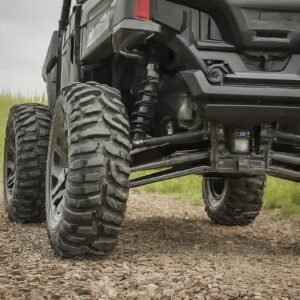
Turf mode is a feature in Polaris Ranger vehicles designed to minimize damage to delicate surfaces like grass or turf. When engaged, it allows for a tighter turning radius by unlocking the rear differential, which reduces the likelihood of tearing up the ground.
Common Issues:
- Engagement Problems: Sometimes, the turf mode may not engage properly, leading to difficulty maneuvering on delicate surfaces. This could be due to mechanical issues or electrical faults.
- Stuck Mode: In some cases, the turf mode might get stuck, either engaged or disengaged, causing challenges when transitioning between different terrains.
- Noise and Vibration: Users may notice unusual noises or vibrations when operating in turf mode, indicating potential mechanical issues or wear and tear.
Troubleshooting Steps:
- Check Connections: Ensure all electrical connections related to the turf mode system are secure and free from corrosion. Loose connections can lead to intermittent issues.
- Inspect Components: Visually inspect the turf mode components for any signs of damage or excessive wear. Pay attention to the differential, linkage, and related mechanisms.
- Fluid Levels: Verify that the fluid levels in the differential are adequate. Low fluid levels can cause lubrication issues, leading to improper operation.
- Reset System: Sometimes, resetting the vehicle’s computer system can resolve minor glitches. You can do this by disconnecting and reconnecting the battery for a few minutes.
- Professional Inspection: If troubleshooting steps don’t resolve the issue, it’s advisable to seek assistance from a certified Polaris technician. They can perform diagnostic tests and identify underlying problems accurately.
6. Polaris Ranger 900 XP dust problem
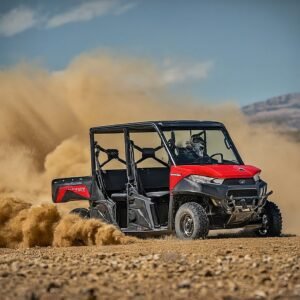
Many users face a common issue with it – dust getting inside the cabin.
Dust can be a real nuisance when you’re driving your Ranger. It can make the interior dirty, reduce visibility, and even affect the performance of the vehicle over time if it gets into important components.
There are a few reasons why dust might be getting inside your Ranger:
- Poor Seals: One of the main reasons dust gets inside is because the seals around doors, windows, and other openings aren’t tight enough. This allows dust to sneak in while you’re driving.
- Air Filtration System: The air filtration system in your Ranger might not be efficient enough to catch all the dust particles before they enter the cabin.
- Driving Conditions: If you’re driving in particularly dusty environments, like dirt roads or dry fields, it’s natural for more dust to find its way inside.
Now, let’s talk about some solutions:
- Upgrading Seals: You can try upgrading the seals around your doors and windows to tighter ones. This will help prevent dust from entering the cabin.
- Regular Maintenance: Make sure to clean and maintain your air filtration system regularly. Replace filters as recommended by the manufacturer to ensure they’re doing their job properly.
- Cabin Air Filters: Consider installing cabin air filters if your Ranger doesn’t already have them. These filters can further help trap dust particles before they enter the cabin.
- Drive Carefully: While you can’t always avoid dusty environments, try to drive carefully to minimize the amount of dust that gets kicked up around your vehicle.
- Aftermarket Accessories: There are various aftermarket accessories available, such as dust shields and wind deflectors, that can help reduce the amount of dust entering your Ranger’s cabin.
7. Polaris Ranger 900 XP front differential problems
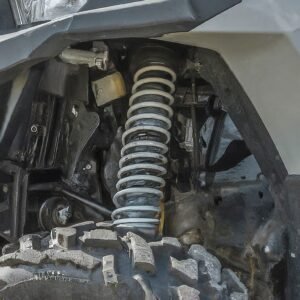
If you’re experiencing problems with the front differential of your Polaris Ranger 900 XP, it’s essential to understand what might be causing the issue and how to address it.
The front differential is a crucial component of your vehicle’s drivetrain, responsible for transferring power from the engine to the front wheels.
When it malfunctions, it can lead to various problems such as noise, difficulty in steering, or even complete loss of power to the front wheels.
One common issue with the front differential is the presence of excessive wear or damage to its components.
Over time, the gears, bearings, or seals inside the differential may wear out due to regular use or insufficient maintenance.
This can result in noise during operation, such as grinding or clicking sounds, especially when turning or engaging four-wheel drive.
Another potential cause of front differential problems is contamination of the differential fluid. If water, dirt, or other debris enters the differential housing, it can degrade the lubricating properties of the fluid and cause increased friction and wear on the internal components.
Regular inspection and replacement of the differential fluid are essential to prevent this issue.
Additionally, improper usage or excessive stress on the front differential can lead to premature failure. This includes activities like towing heavy loads, driving over rough terrain at high speeds, or engaging in aggressive off-road driving.
Overloading the vehicle or subjecting it to harsh conditions can put undue strain on the differential, causing it to fail prematurely.
8. Belt issues
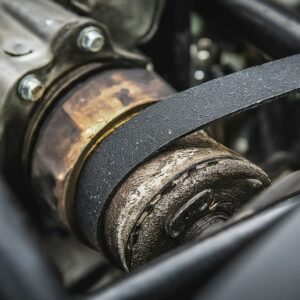
Belt issues can be frustrating, but understanding the causes and solutions can help you get back on track.
One common problem is belt slippage, where the belt doesn’t grip the pulleys tightly enough. This can happen due to various reasons such as improper belt tension, worn-out belts, or contaminants like dirt and debris on the pulleys.
To troubleshoot, start by checking the belt tension. Make sure it’s within the manufacturer’s recommended range. Adjust it if it’s too loose or too tight. You may need to refer to your owner’s manual for specific instructions on how to adjust the belt tension properly.
Inspect the belt for any signs of wear and tear such as fraying, cracking, or glazing. If you notice any of these issues, it’s time to replace the belt. Even if the belt looks fine, it’s a good idea to replace it if it’s been in use for a long time as belts can degrade over time.
Next, check the pulleys for any buildup of dirt, debris, or belt residue. Clean them thoroughly using a brush and a mild detergent if necessary. Make sure the pulleys are in good condition with no signs of damage or excessive wear.
Another potential cause of belt problems is misalignment. Make sure the pulleys are aligned correctly. When the belt is misaligned, it can wear unevenly and prematurely fail. If you notice any misalignment, adjust the pulleys as needed to ensure they’re properly aligned.
It’s also important to consider your driving habits. Hard acceleration, towing heavy loads, or driving in extreme conditions can put extra stress on the belt and increase the likelihood of problems. Try to drive smoothly and avoid putting unnecessary strain on the belt.
9. Fuel Pump Problems
The fuel pump in your Polaris Ranger 900 XP is crucial for delivering fuel from the tank to the engine. You might notice symptoms such as engine sputtering, difficulty starting, or even complete engine failure when it malfunctions.
Sometimes, the fuel pump might make unusual noises, signaling it’s struggling to operate correctly.
Solutions
Addressing fuel pump issues promptly can prevent further damage to your vehicle. Here are some practical solutions:
- Check the Fuel Filter: A clogged filter can mimic fuel pump problems. Ensure the filter is clean and replace it if necessary.
- Inspect Electrical Connections: Faulty wiring or loose connections can disrupt the fuel pump’s performance. Check for any damaged wires or loose connectors and fix them.
- Fuel Pressure Test: A fuel pressure test can help determine if the pump delivers fuel at the correct pressure. If the pressure is low, it might be time to replace the pump.
- Replace the Fuel Pump: Replacing the fuel pump is the most viable solution if all else fails. Make sure to use a high-quality replacement part to ensure longevity and reliability.
10. Dust Ingress issues
The primary reason for the dust problem in the Polaris Ranger 900 XP is its design. The vehicle’s cab is not entirely sealed, allowing dust to enter and accumulate inside.
Additionally, the engine and exhaust system can kick up dust, which then finds its way into the cabin. This can cause discomfort and even affect the vehicle’s performance over time.
Solutions
Fortunately, there are several solutions to mitigate the dust problem in your Polaris Ranger 900 XP:
- Sealing the Cab: One of the most effective ways to reduce dust ingress is by sealing the cab. You can use aftermarket seals and door kits designed specifically for the Polaris Ranger 900 XP. These products help close gaps and reduce the amount of dust entering the cabin.
- Installing a Cab Filter: Another useful solution is to install a cab filter. These filters can trap dust particles before they enter the cabin, ensuring a cleaner environment inside the vehicle.
- Regular Cleaning and Maintenance: Regularly cleaning your vehicle and maintaining the seals can also help manage the dust problem. Make it a habit to clean the interior and check for any gaps or wear in the seals.
11. Ranger 900 XP Lift Kits problems
One of the most frequent issues users encounter is alignment problems. After installing a lift kit, you may notice that your Ranger’s wheels are not aligned correctly, leading to uneven tire wear and steering difficulties.
Another issue is the strain on the suspension components. Lifting your Ranger can place additional stress on the axles, shocks, and control arms, potentially causing premature wear or failure.
Lastly, driveline vibrations can occur when the driveshaft angles are altered, leading to a less smooth ride.
Solutions to Lift Kit Problems
To address alignment problems, it is crucial to have a professional alignment performed after installing the lift kit. This ensures your wheels are correctly aligned, reducing tire wear and improving handling.
For suspension strain, consider upgrading to heavy-duty suspension components designed to handle the increased stress. Many aftermarket companies offer reinforced axles and shocks to withstand the additional load.
You may need to install a bracket or spacer to mitigate driveline vibrations and adjust the driveshaft angle. Some lift kits come with these components; if not, they can be purchased separately.
12. Charging Problems
A dead or weak battery is one of the most frequent charging issues in the Polaris Ranger 900 XP. A faulty stator, regulator/rectifier, or poor battery connections can cause this.
Another common problem is the battery needing to hold a charge, often due to sulfation or age.
Diagnosing the Charging System
To diagnose charging issues, check the battery voltage with a multimeter. A fully charged battery should read around 12.6 to 12.8 volts. If the reading is below this range, the battery may need replacing.
Next, inspect the stator and regulator/rectifier for any visible damage or loose connections. Testing these components with appropriate tools can help determine if they function correctly.
Solutions
Once you’ve identified the issue, you can take the following steps:
- Replace the battery if it’s old or damaged.
- Clean and tighten all battery connections.
- Test and, if necessary, replace the stator or regulator/rectifier.
- Ensure that the charging system wiring is intact and free from corrosion.
13. EPS Problems
Here are some of the frequently reported issues related to Polaris Ranger EPS:
- EPS Warning Light Activation
- Steering Wheel Vibration
- Intermittent EPS Functionality
- Stiff Steering
- Loss of Power Steering
EPS Warning Light Activation
If you notice the EPS warning light on your dashboard, it could indicate an issue with the power steering system. This might be due to a sensor malfunction or a wiring problem. It’s important to fix this quickly to prevent more problems.
Steering Wheel Vibration
Feeling vibrations in the steering wheel can be worrying. This often results from misaligned wheels or worn out tie rods. Regular maintenance can help prevent this issue.
Intermittent EPS Functionality
If your EPS works sporadically, it could be due to a loose connection or an electrical fault. Ensuring that all connections are secure can often resolve this problem.
Solutions to Polaris Ranger EPS Problems
Here are some practical solutions to the common EPS problems:
- EPS Warning Light Activation: Check the EPS sensor and wiring for any faults. If necessary, replace the faulty components.
- Steering Wheel Vibration: Inspect and align your wheels regularly. Replace any worn-out tie rods to prevent further issues.
- Intermittent EPS Functionality: Ensure all electrical connections are tight and secure. Check for any signs of wear or damage in the wiring.
- Stiff Steering: Lubricate the steering system and check for any obstructions. Regular maintenance can help keep the steering smooth.
- Loss of Power Steering: Check the EPS motor and control unit. If they are faulty, consider replacing them to restore functionality.
Conclusion
While the Polaris Ranger 900 XP is a reliable off-road vehicle, it is not immune to problems. By being aware of the common Polaris Ranger 900 XP issues and following the provided solutions, you can ensure that your Polaris Ranger 900 XP remains in optimal condition.
